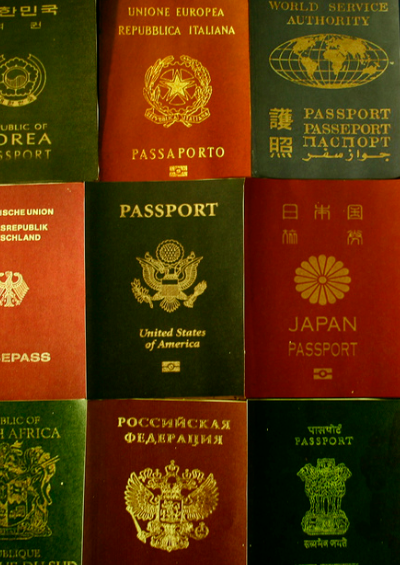Global Migration in Perspective
Back in 1900, immigrants made up 3% of the global population. What is the percentage today?

Credit: Baigal Byamba - www.flickr.com
Takeaways
- Since 1900, international migrants have accounted for approximately 3% of the world’s population.
- As of 2014, 13% of the total U.S. population was born outside the United States.
- Within the U.S. labor force, the share of immigrants is 16%.
- In Spain, the foreign-born population’s share is 12%, but people believe it is 24%.
- Just 1% of the Japan’s population is foreign-born, the lowest among developed nations.
Back in 1900, international migrants — people living in a country other than the one they were born in — accounted for approximately 3% of the world’s population. What is the percentage today?
A. 13%
B. 10%
C. 3%
D. 1%
A. 13% is not correct.
As of 2014, 13% of the total U.S. population was born outside the United States. Within the U.S. labor force itself, the share of immigrants is slightly larger, reaching 16%. This includes both very high-skilled workers (for example, doctors, scientists, engineers and computer programmers) and lower-skilled laborers (such as construction workers, farmhands and household workers).
In the United Kingdom, too, 13% of the population is foreign-born. This figure is fairly typical for many advanced economies. It is also much lower than the shares seen in the United Arab Emirates or Qatar, where 84% and 74%, respectively, of the resident population is foreign.
Beyond their contribution to the workforce of their new countries of residence, migrant workers also contribute significantly to their original home economies, usually through international money transfers. These workers regularly divert portions of their earnings to family back home. According to World Bank data, remittances to developing countries totaled $435 billion in 2014.
B. 10% is not correct.
About 10% of the European Union’s residents were born in a country, including EU member states, other than the one where they live now.
Media headlines in Europe each day feature stories of mounting refugee populations from the wars in Syria and Libya, as well as the tragic deaths of hundreds of people perishing on boats in the Mediterranean. While these problems are real and warrant immediate policy attention, a key part of the challenge is the prevailing public perception of immigration.
In France, for example, 10% of the population is foreign-born. However, according to opinion polls, people incorrectly believe that the share is more like 28%. In the UK, the gap between reality and perception is a bit smaller, with an actual 13% share of foreigners among the country’s population compared to an imagined share of 24%.
Spain’s case is very similar to France’s: The foreign-born population’s share is 12%, but people believe it is 24% — double what it actually is.
However, for all the political hand wringing in Europe, the reality-perception gap among major countries is actually far greater in the United States. There, the public believes 32% of its population is foreign-born, 19 percentage points greater than the actual share.
This misperception might be related to the fact that the United States has absorbed the single largest share of all current global migrants: 19% worldwide reside in the United States, trailed distantly by Russia and Germany with 4% to 5% each.
C. 3% is still correct.
Global migrants make up 3% of the world’s population. This means their proportion is essentially unchanged from where it was back in 1900, even though it has never been easier to move between countries.
In fact, migrants’ 3% share of the world population has remained stable for 55 years now, essentially after the disruptions of the world wars had settled back down.
However, given the significant growth in the overall world population, the absolute number of migrants is more than four times as large today as in 1900 — approximately 215 million now, while it was 50 million back then. The number of migrants worldwide is, in fact, greater than the entire population of Brazil, the world’s fifth-most populous nation.
Much of migration today is related to huge gaps in earning potential for workers with the same qualifications in advanced economies and developing economies. For example, nurses make seven times more in Australia than in the Philippines. And accountants earn six times more in the United Kingdom than in Sri Lanka — even when measured in terms of purchasing power parity.
D. 1% is not correct.
Japan is an outlier among advanced economies, which are usually magnets for migration. Just 1% of the country’s population is foreign-born, making it one of the few wealthy nations with a migrant share lower than the global average of 3%.
Other regions close to Japan’s level are Latin America and Sub-Saharan Africa. Both are emigration source regions and have average migrant populations of 1.4% and 1.8%, respectively, from outside their regions, although internal migration is higher.
Among OECD countries, 11% of their overall population consists of migrants, a share significantly above these regions and the global average of 3%.
However, 40% of all migrants living in OECD countries today actually came from a different OECD country. (Examples include citizens of one EU member state moving to another EU state or Canadians moving to the United States.) After internal OECD immigration, a further 26% of migrants come to the OECD from Latin America, 24% from Asia and 10% from Africa.



























